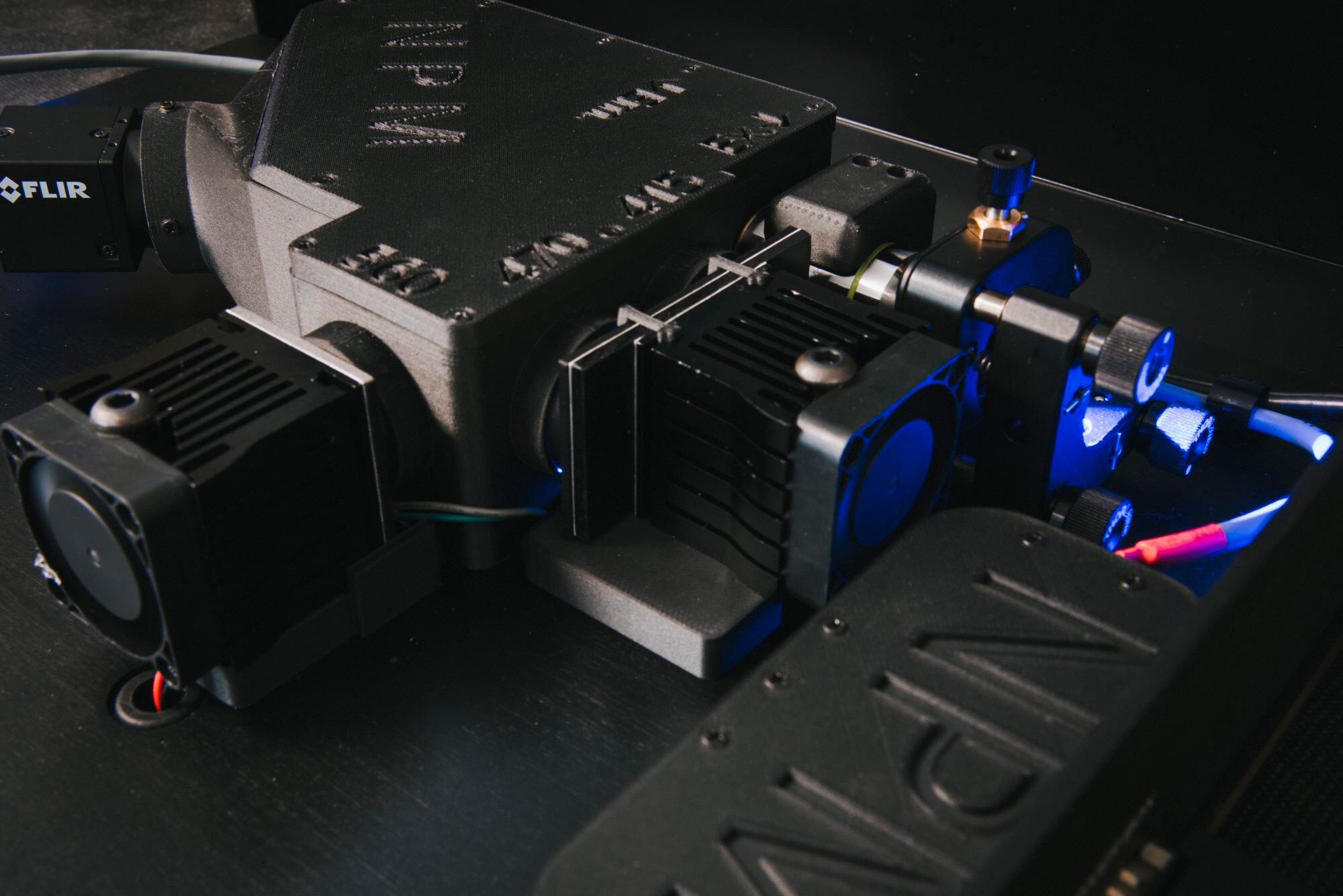
Sample Raw Data: Recording from Axon Terminals
In this data highlight, we present a sample of raw fiber photometry data recorded from axon terminals using the Neurophotometrics system. These data were reproduced with permission from the authors who requested to keep their names and favorite brain region anonymous.
A virus expressing GCaMP6s was injected into a brain region and an optic fiber cannulae was implanted over a specific projection from that nucleus. These data represent the mean value of an ROI drawn over the face of an optical fiber over time. They have not been manipulated or corrected in any way.
The trace above is a snippet of a long recording session. The animal was placed in an open field and air puffs were administered manually. Recording sessions with our system can vary in length, and if light power is dialed in then researchers can expect multi-hour recordings with minimal bleaching.
The colorful traces to the left represent the data cut up into event-related fluorescence traces. This reveals similarities in temporal kinetics. Notably, the faster rise and slower decay is typical with GCaMP6s.
In this summary graph, you can observe a decrease in the peak response to an air puff as a function of time — potentially due to habituation of the animal. The response increased after a short period of no intervention.
With sufficient viral expression and cannula placement, our FIP system routinely offers single trial resolution. This decreases the time-course of many experiments and allows for unique insights into the dynamics of individual trials.
Note: Recording trials were interleaved with 470nm and 410nm excitation allowing for near-simultaneous calcium-dependent and calcium-independent (isosbestic) measurements. The 410nm trace was a flat line and is not shown with these data.



